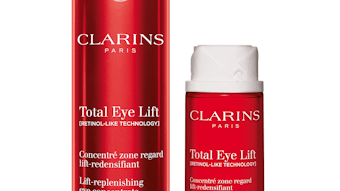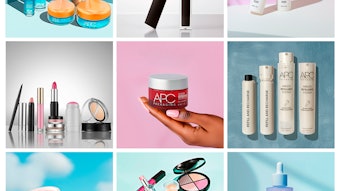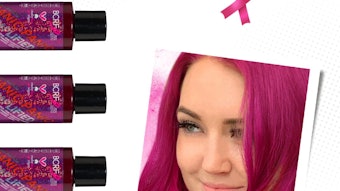- Trial is a key engagement option for new and existing beauty products, and one of the best ways to encourage trial is with sample products.
- Sample sizes that mimic full-size products are a popular trend, giving consumers a taste of the exact product in a condensed size.
- Samples provide important product information to consumers—relaying what the product is, what ingredients are in it, how to apply it, testimonials and claims, and much more.
There are very, few people who don’t like a free sample. Particularly for something like beauty products, which offer a plethora of options that can vary in color, consistency, feel, look, price, value, emotional connection and beyond, sampling is nearly a must for consumers—and therefore beauty brands—today. And as economic issues continue to weigh on consumers, and more and more beauty products flood the market, sampling programs grow ever more important.
“With the increase of choices and options, consumers are looking for filters to help them make smart choices,” says Katia Beauchamp, co-founder of beauty sampling and subscription company Birchbox. “Without those filters, sifting through the many options is overly time-consuming, and consumers are often left disappointed by their choices. Birchbox simplifies a consumer’s discovery of new beauty and lifestyle products, making the process both fun and highly efficient.”
New beauty products appear on both brick-and-mortar and virtual shelves every day, and with so many brands vying for attention, sampling is a distinct way to break through. “Trial is the number one reason that consumers change their behavior. In beauty, consumers expect to touch, smell and interact with the products before they purchase them,” explains Beauchamp. And Emmanuelle Hermandesse, category manager of samplers and mini-products with Albéa, says, “The true challenge to brand owners is to successfully launch a new product—and protect the appeal of consumer favorites—in a sea of hundreds of new product introductions each year, along with the sharp increase in line extensions and flankers. In this avalanche of new products, mini-product programs help the brand stay connected. Of course, every year the bar gets raised. The design, features and decorative elements of the sampler constantly improve.”
But what makes for a good sample and helps create good engagement points for sampling programs? How will consumers remember one beauty sample over another? And how do sampling companies such as Birchbox choose what products and samples to feature? One key way is through packaging. “Packaging is extremely important,” Beauchamp says. “We are currently working on learning more about what works online when it comes to packaging, but we are acutely aware that it holds a lot of power—especially being that the customer’s first interaction is with the sample’s packaging. A customer’s first look at a sample’s packaging is the first chance to create an impression. In fact, in an effort to expand our understanding of the impact of packaging, we ask subscribers about packaging to help us tap into their full perception of the product.”
The advantages of having a sampling program are clear, and quality sample packaging is key to a well-developed sampling program.
Tom Martin, vice president of sales and marketing, Klocke of America, Inc., sums it up in saying, “The consumer is more likely to buy a product after being able to try it in order to know that it fits them and it works for them. Innovative sampling leads directly to increased sales for the retail product.”
Sample Solutions
The key to a good sampling program is thoughtful development in its creation. What product would most benefit from sampling? Where should samples be available, and who should they be available to? And, perhaps most importantly, what makes the sample engaging?
“Brand owners seek novel mini-product programs that seduce and surprise the end-consumer and permit the consumer to enter the universe of the brand,” Hermandesse says. “For new retail launches, their goal is to attract new consumers and build brand awareness. For existing products, the brand owner seeks to maintain consumer loyalty and reinforce demand. Today’s savvy brand owners realize that the mini-product is a true ambassador of the brand image. The strategic mini-product program is a highly useful tool that delivers superior return-on-investment.”
Margery Woodin, vice president of marketing and sales with Identipak, also notes that return on investment is a must for good sample packaging, as well as quality and functionality. “Communicating the brand’s core value is crucial to the success of a product, and the sample package should achieve this as well, since after all, it is an extension of the retail product,” she says.
For beauty products, it is rare that a product won’t be a fit for sampling, and the vast majority of segments benefit from it. “Our market research tells us that 90% of consumers find that sampler usage is essential to fragrance purchase, and 92% really use the samplers they receive,” relays Hermandesse. “Today’s international, multi-SKU launches must succeed quickly. Therefore, the comprehensive mini-product program can impact outcomes by increasing the number of retail touches. Think of the mini-product as another product spokesperson that cuts through the clutter to tell your product and brand story.”
Additionally, Hermandesse notes, “In exciting emerging markets, mini-products permit the purchase of most-wanted beauty products by those who could not otherwise afford the full-sized product. This helps build incremental sales and wins future brand loyalists.”
And it is the packaging for beauty product samples that must build these connections from the outset. Thus, Martin explains, “I think the overall look and presentation of the package is most important, then followed by form and function. The customer must be emotionally engaged as soon as they have the sample in their hand, from a visual standpoint. From that point, they have to love the fact that the sample is easy to open and it dispenses the product simply and easily. It is all a reflection on the retail product being marketed.”
Options for Attention
But what are the opportunities for sample packaging to engage through? Sample packaging can be as different, or as similar, as the products they contain, but there are points for key differentiation and decisions beauty brands need to hone in on before creating samples. According to Martin, engaging sample packaging needs to have “eye-catching, unique designs, and a direct visual connection with the retail product that the sample is promoting, i.e., mimicking the retail product look.”
That direct visual connection via samples that look like tinier versions of the retail SKU is a popular option recently, helping consumers get feel for the actual product inside and out before they purchase. “Today’s high-tech, full-featured mini-products perfectly emulate the end-user experience of the full-sized product. Further, they are customizable with a variety of materials, pumps, colors and decorative elements to communicate perceived value far above the giveaways of years past,” says Hermandesse. “We also can help develop the full-size retail pack—and samplers—and support the program in either the launch phase or reboot. Our Mini Nea allows brand owners to develop promotional and bundle offers, travel sets and premium collections in a way that preserves sensitive formulations and delivers the soft actuation and precise application of our entire Nea range.”
Woodin also explains the importance of a visual connection, saying, “We believe that producing miniatures or shaped sachets to mimic the retail product is important when designing the sample package. Identipak’s shaped sachets give brands the option to switch from a miniature bottle to a shaped sachet, which mimics the retail container—a much more affordable proposition. When the consumer tries the sample, she is looking at what the retail container looks like and makes a connection, specifically when in a store looking to buy that same product.”
“Think of a body wash or hair care product,” Woodin continues. “Most brands share similar bottles, so it is important that the consumer will not confuse one brand for the other. By sampling a sachet that looks just like the retail bottle, one leaves an impression in the consumer’s mind of what exactly to look for when faced with 20 different products on the shelf.”
And Martin also says that sample packs created to mimic the full-size products can cross segments, noting that Klocke of America offers single dose thermo-formed blisters created to look like the retail product. “The blister can be printed to look exactly like the retail package, and our blisters are made as a peel back or snap back in order to use the product,” he says. “We also have a variety of small-form, low-cost blisters for fragrance, creams, lotions and serums so the [beauty brand] can get the product being marketed to their customers in a low-cost carded blister.” He notes that other Klocke of America options also include sachets, pouches and packettes in all forms and sizes, as well as a line of scented polymer products to convey the exact fragrance in wristband, air freshener, blotter and jewelry forms.
Learning From Samples
Samples don’t just deliver product, however—they also deliver important information about the product, hooking consumers in with the name, claims and ingredients, among other brand differentiators. Blister-packaged samples can—and often do—include a printed card to hold the sample, and Martin notes that this card should have enough print area to be able to tell the story about the product.
Woodin notes, “This information about the product has to be explicit and clear [within the space of] the label area or by including an information card. We also suggest our customers include a QR code, which can be scanned by a smartphone to take prospective customers to an informational website that further describes the benefits of a product.”
Martin also notes, “For our single-use blister products, we have always steered our customers into using a flat or booklet-style card to hold the blister in a visual way. The card not only creates a beautiful package, but it is also functional as a handout or sent by mail. We are also seeing a large increase of sachet-on-card applications, which show a sachet tipped onto a printed card to increase the billboard area in order to market the retail product.”
Clearly, the informational text developed for samples must be well thought-out too. And not just what the words say, but how they are developed. “Most samples are given to try a new product, and we all want to know what it is for, how to apply it, when best to use it,” says Woodin. “Unfortunately because of labeling requirements, most print type is way too small to read or the area is not large enough to include desired instructions. I’ve come across several samples that miss the target precisely because I learn so little from the experience.”
“My favorite and most effective sample [in 2012] was designed for Tigi,” Woodin continues. “They launched a hair care system for which a sample piece included a very robust carrier card with photos and information on how to apply each of the products in the line to produce the desired effect, and the product samples were beautifully executed to mimic the retail containers.”
Engaging Attention
The bottom line is getting the product into the hands of the consumer and helping them create a connection with the product to make them want to come back for more. “Positioning of the brand to a specific target is the first goal of the sample planning process,” says Woodin. “By addressing the who, how and when thoroughly, you can cohesively align marketing’s goals to ensure a successful sampling campaign.”
For Martin, the key to connection is making sure the message is appropriate and authentic for your brand and its needs. “Each [beauty brand] has an idea of what it wants in a sample package. The key is to be able to address the style and cost that fits with the sample budget it has to work with,” he says. “An example would be a customer who wants to sample 10 shades of foundation in a 0.5 mL blister pack with a card. This style sample carries a high cost due to a dosing for 10 different shades. A more economical version would be to dose only three shades in blisters and print the other seven shades on the card so the customer sees all of the available colors, and the final sampling vehicle can be produced at a much lower cost.” This way, the consumer gets the product experience, interaction and information, and the sampling program is also cost-effective for the brand.
Hermandesse also notes, “The best mini-products are truly fun for the end-consumer to use, and are handy little reminders of the retail product. When you do it right, the mini-product experience perfectly emulates its ‘big brother’ and captivates the consumer.”









